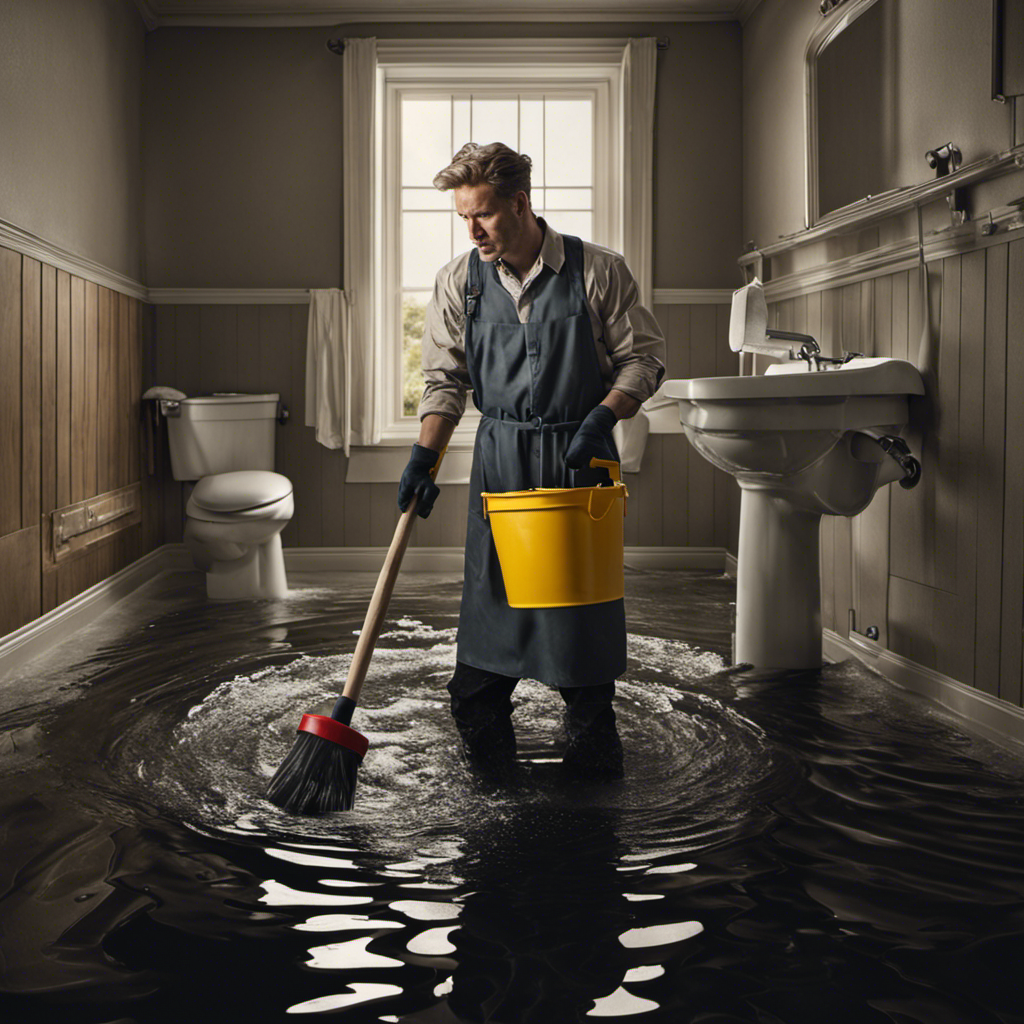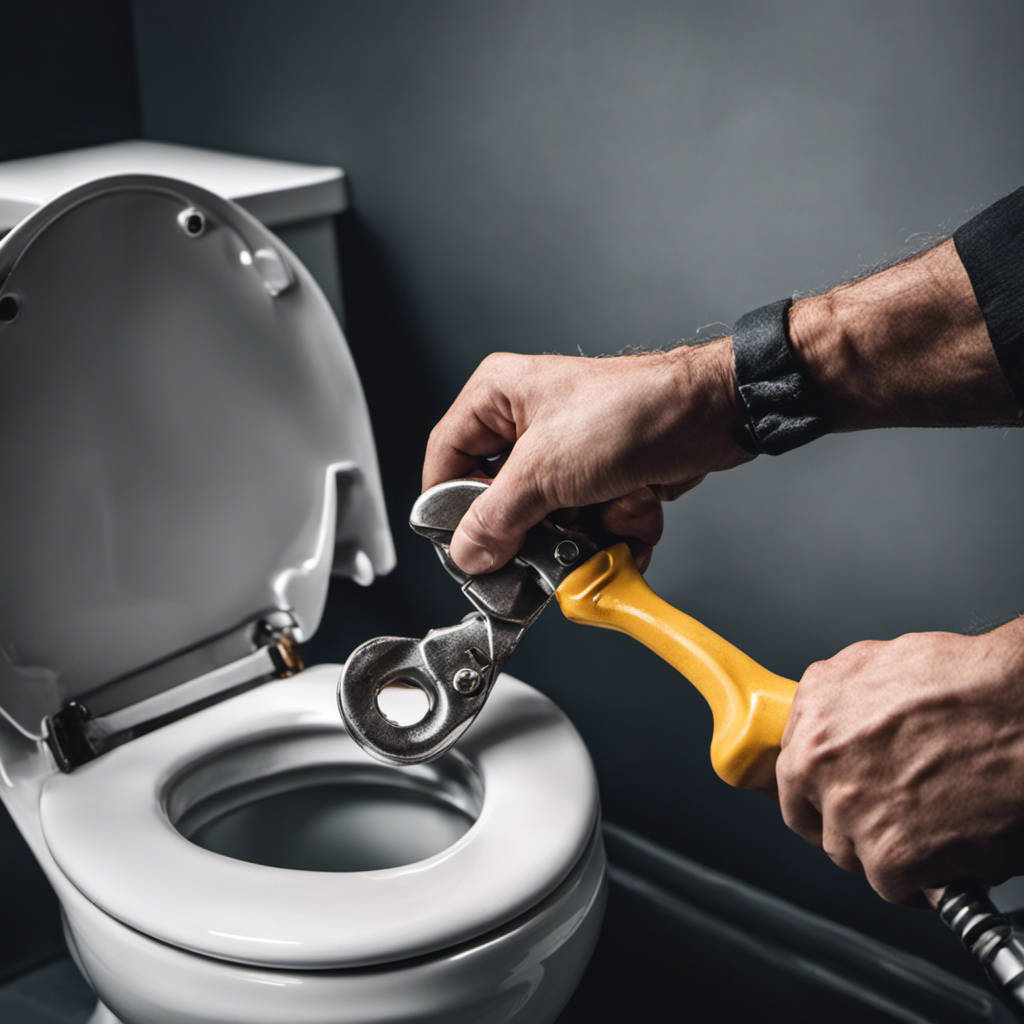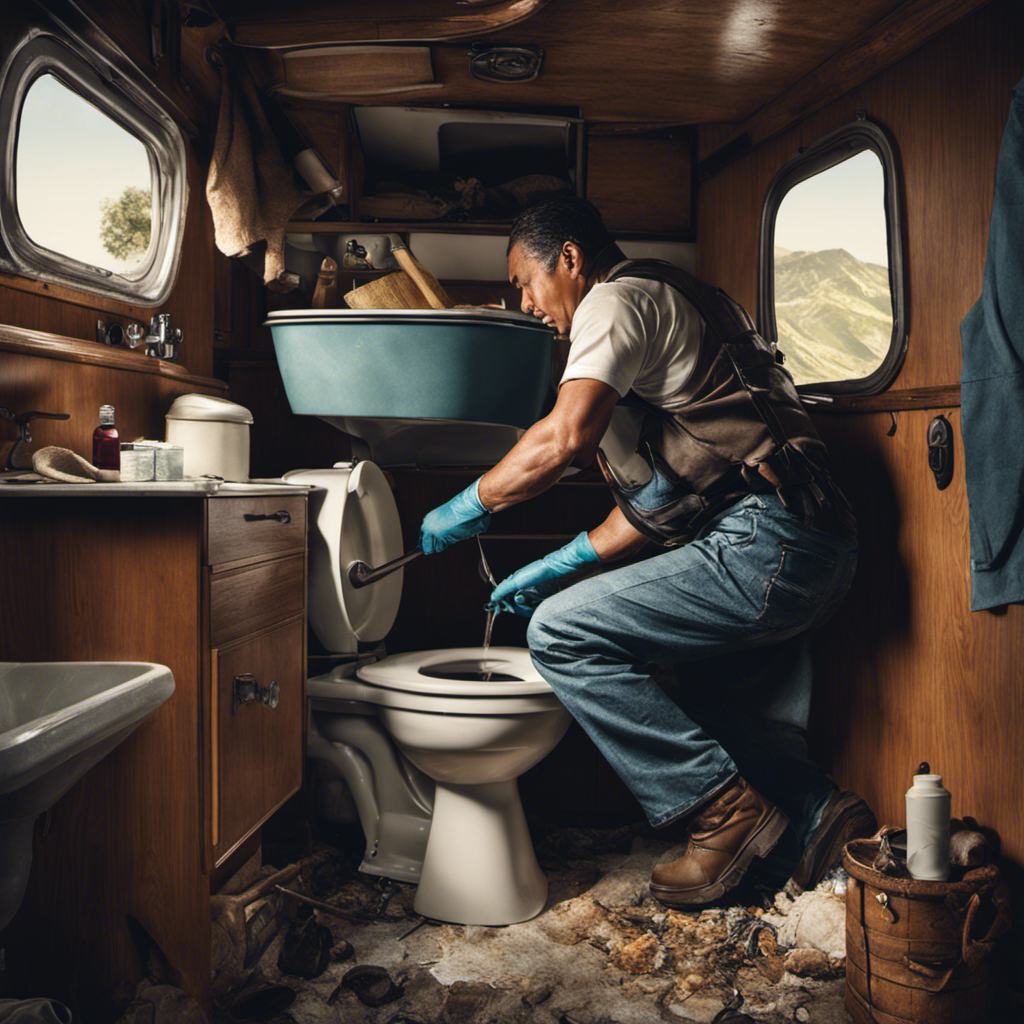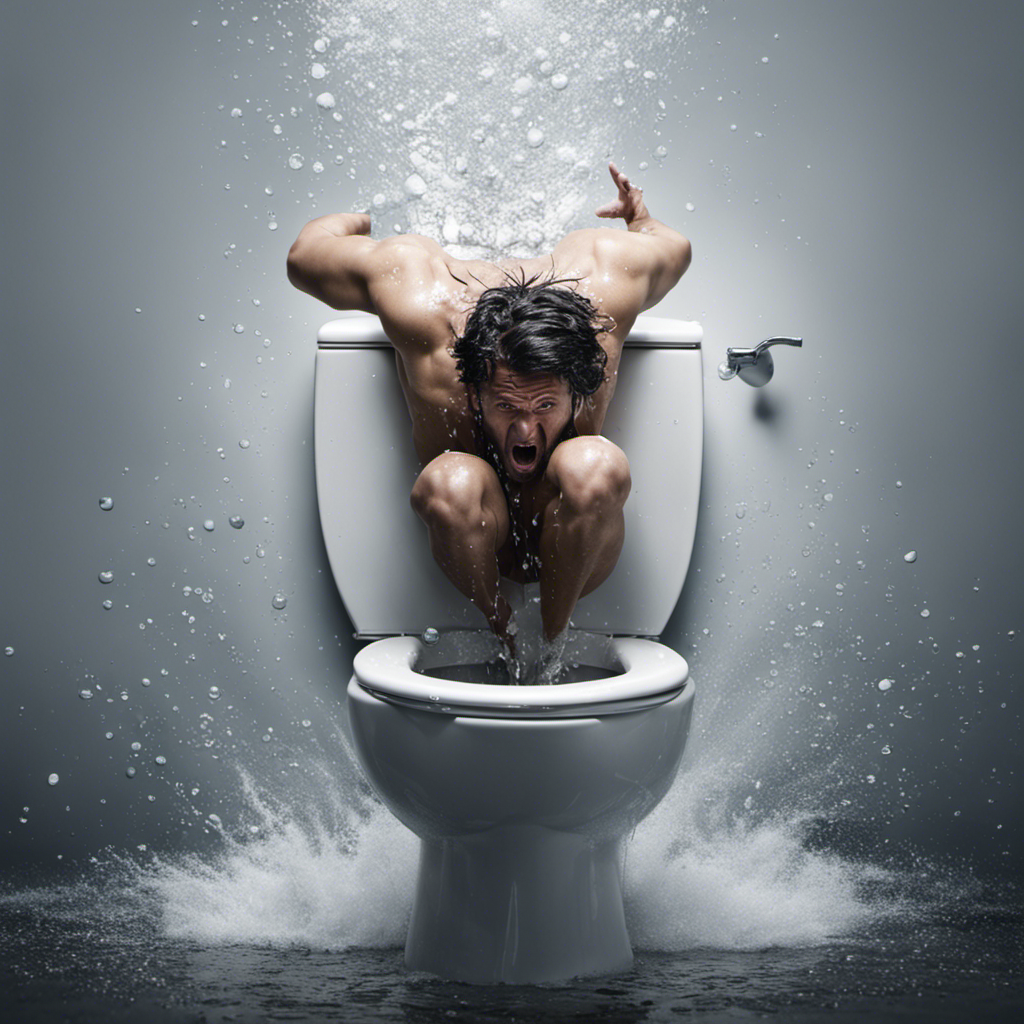Have you ever found yourself in a sticky situation with a flooded toilet? Don’t fret! We’ve got you covered with this handy guide on how to fix a flooded toilet.
From the causes of the problem to the step-by-step solution, we’ll walk you through the process in a knowledgeable and practical manner.
With the right tools and a little know-how, you’ll be able to unclog your toilet and prevent future floods. So, roll up your sleeves and let’s dive in!
Key Takeaways
- The main causes of a flooded toilet include clogs in the drain pipe, flushing non-flushable items, and turning off the water supply.
- Tools and materials needed for fixing a flooded toilet include a plunger, bucket, rubber gloves, and a towel.
- Steps to unclog a flooded toilet include using a plunger, maintaining a firm seal, and considering the use of a plumbing snake or auger if the clog persists.
- To prevent future toilet floods, regularly inspect the toilet, educate household members on what can be flushed, install a drain strainer, and consider using a toilet overflow alarm.
Causes of a Flooded Toilet
One of the most common causes of a flooded toilet is a clog in the drain pipe. When the drain pipe becomes blocked, water cannot flow properly, leading to an overflow.
To prevent this from happening, it is important to be mindful of what you flush down the toilet. Avoid flushing items such as paper towels, sanitary napkins, or baby wipes, as they can easily cause a clog.
If you do encounter a clog and your toilet starts to overflow, there are a few steps you can take to address the issue. First, turn off the water supply to the toilet using the shut-off valve located near the base. Then, try using a plunger to dislodge the clog.
If that doesn’t work, consider calling professional plumbing services to ensure the clog is properly cleared.
Tools and Materials Needed for Fixing a Flooded Toilet
To fix a flooded toilet, you’ll need a plunger, a bucket, rubber gloves, and a towel. These tools and materials are essential for successfully resolving toilet repair issues.
The plunger is your first line of defense against a clogged toilet. Make sure it has a good seal over the drain hole to create the necessary suction.
Next, have a bucket ready to catch any excess water or debris that may come out during the process.
Rubber gloves are essential for personal protection, as you may come into contact with unsanitary water.
Lastly, keep a towel handy to quickly clean up any spills or splashes.
With these items at your disposal, you’ll be able to tackle DIY plumbing repairs with confidence and efficiency.
Step-By-Step Guide to Unclogging a Flooded Toilet
Using a plunger, you’ll be able to quickly and effectively clear any clogs in your toilet. It is important to have a plunger on hand for emergency toilet repair techniques.
To unclog your toilet, start by placing the plunger over the drain hole and giving it a few vigorous plunges. This will create suction and help dislodge the blockage. Be sure to maintain a firm seal with the plunger to maximize its effectiveness.
If the clog persists, you can try using a plumbing snake or auger to break up the obstruction.
Tips for Preventing Future Toilet Floods
Regularly cleaning your toilet, avoiding flushing non-flushable items, and using a drain strainer can help ensure that your toilet doesn’t experience future flooding. Here are some practical tips to prevent toilet floods:
- Conduct regular inspections to identify any leaks or issues with the toilet mechanism.
- Educate everyone in your household about what can and cannot be flushed down the toilet.
- Install a drain strainer to catch any debris or hair that could potentially clog the pipes.
- Consider using a toilet overflow alarm, which can alert you in case of an emergency.
Maintaining your toilet is crucial to prevent unexpected floods and the damage they can cause. However, accidents can still happen, so it’s important to know how to handle a toilet overflow emergency.
In the following section, we will discuss common mistakes to avoid when fixing a flooded toilet.
Common Mistakes to Avoid When Fixing a Flooded Toilet
When attempting to address a flooded toilet, it’s important to avoid making these common mistakes. While DIY toilet repair can save you money, it’s crucial to be aware of the potential pitfalls. Many people make these mistakes when trying to fix a flooded toilet without the help of toilet repair professionals.
One common mistake is using too much force when plunging the toilet. This can cause further damage to the plumbing system. Another mistake is using incorrect tools or materials, such as using a wire hanger instead of a toilet auger. Lastly, not turning off the water supply before attempting to fix the toilet can lead to a bigger mess.
To highlight the importance of avoiding these mistakes, here is a table outlining the potential consequences:
| Common Mistake | Potential Consequence |
|---|---|
| Using too much force when plunging | Damaging the plumbing system |
| Using incorrect tools or materials | Ineffective repair or further damage |
| Not turning off the water supply | Creating a bigger mess |
Conclusion
In conclusion, fixing a flooded toilet may seem daunting, but with the right tools and know-how, you can tackle it like a pro. Remember to remain calm and follow the step-by-step guide provided. Avoid common mistakes that could worsen the situation.
By taking preventive measures and regularly maintaining your toilet, you can keep future floods at bay. So don’t throw in the towel just yet. Roll up your sleeves and get ready to fix that flooded toilet like a champ. Remember, a stitch in time saves nine.










